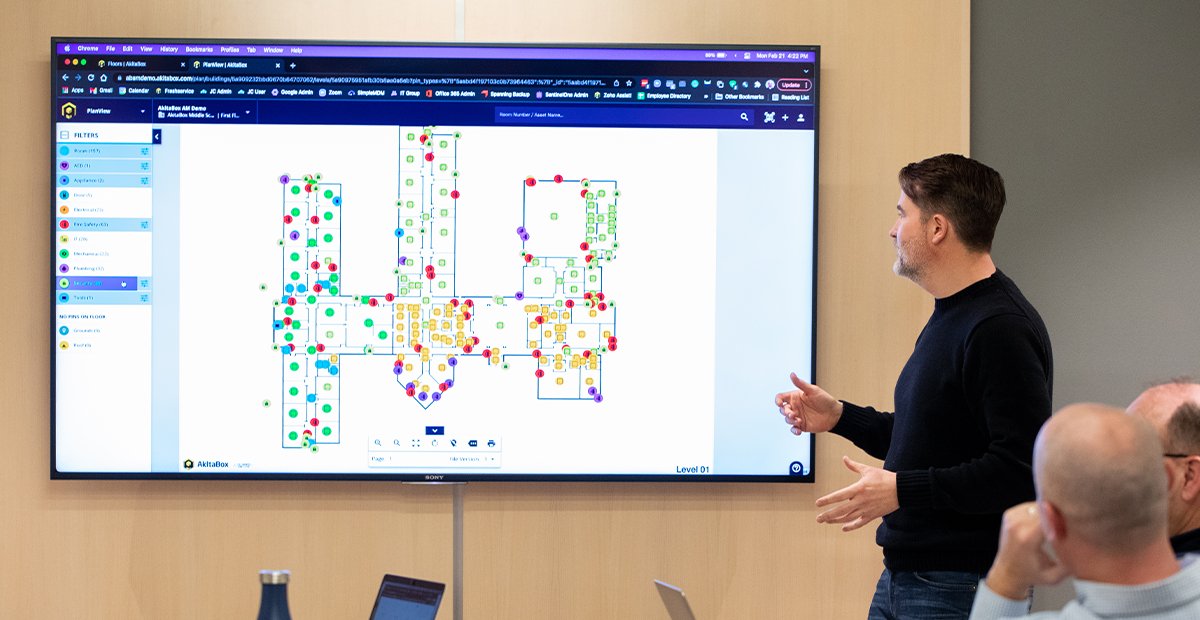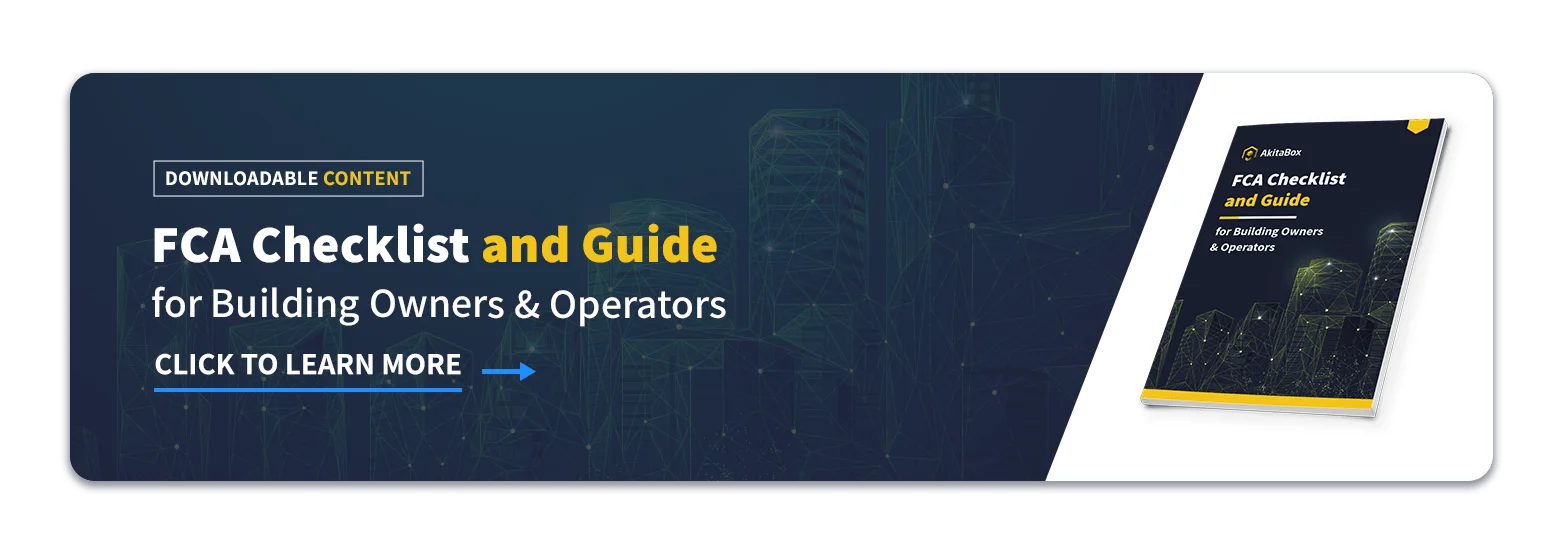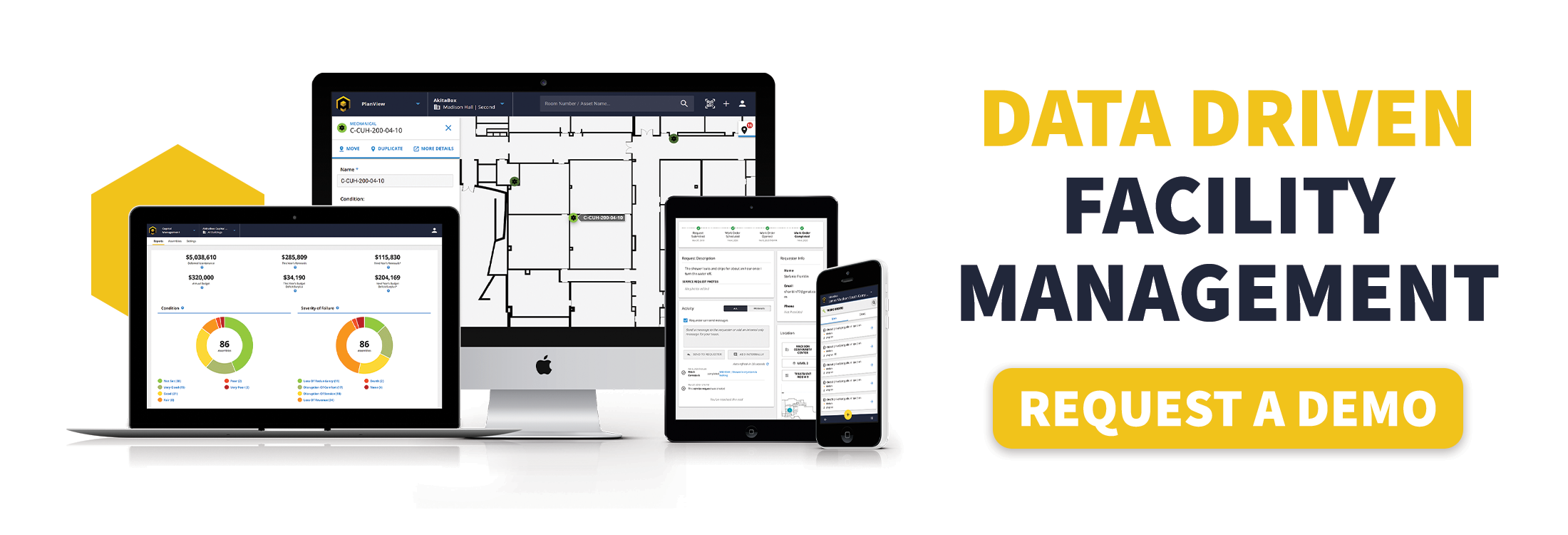Deferred maintenance backlogs suck. Nobody likes them, but they’re a fact of life. And while there are a number of things you can do to help shrink them, one of the only ways to really make a dent is to ask for more money.
That’s easier said than done – but it’s definitely not impossible.
You need to fully understand your current backlog (understand it so well that there isn’t a question a leader can pose that you can’t answer), build a data-driven budget (based on what’s actually happening in your facility today), and present it persuasively to leadership (in a way that’s compelling and makes sense to them).
Do that, and your chances of getting more budget go up exponentially. Want to know how? You’ve come to the right place. These three steps can help you build and present a strong budget for your deferred maintenance needs that has a better chance of getting approved.
Step 1: Collect Your Deferred Maintenance Data
Imagine two competing financial advisors trying to sell you on investing in something. The first one backs up everything he recommends with good data. The second one tosses out best guesses and says he “has a feeling” his recommendation is best.
Who comes across as more knowledgeable and trustworthy? Who’s going to get your money? Yep – the guy with the data.
The financial decision makers at your organization award budget dollars based on data, too. Put together a budget request backed by trustworthy data and your chances of actually getting more money go way up.
Start your data collection by asking yourself these three questions.
How big is my backlog? List out all of your deferred maintenance tasks so you know the exact extent of the backlog.
What’s the current condition of these deferred items? Conduct a facility condition assessment (FCA). An FCA evaluates your building’s condition and code compliance. It also looks at the performance and age of all the finishes, systems, and equipment. Once completed, you’ll know the actual condition of your facility, including how well or poorly your deferred maintenance assets are holding up.
This is an important step. It eliminates any guesswork on your part and instead delivers concrete evidence of the condition of your deferred maintenance items.
Which items take priority? Realistically, you won’t get enough budget to complete ALL your deferred maintenance. So make sure you know which items are most important to address.
Look at your backlog list. For each task, list out the associated cost to resolve the task (labor, parts, time, etc.). Then list out the benefits of having that task resolved (increased efficiency, reduced risk, freed up resources, etc.). Compare the cost with the benefit to identify which items have the greatest ROI. Those are the ones to budget for and tackle first.
Pro Tip: Gather and Maintain Your Data All Year Round
Some facilities managers wait until the budget is due to pull together the deferred maintenance info they need. But you can’t just copy your data from the last budget, because it’s hopelessly outdated. So you’re forced to start over from scratch. Talk about time consuming and stressful.
Wouldn’t it be easier if you could keep track of your deferred maintenance data all through the year? When budget time rolls around, you’d already have the info you need to create your budget request.
Facilities management (FM) software lets you manage all of your facilities activities and data in one place. This includes your maintenance work orders, the current condition of your assets, and your deferred maintenance tasks. It gives you visibility into everything going on in your buildings.
When your next budget deadline looms, you can more easily and quickly pull together the data you need thanks to the up-to-date information living in your FM software tool.
Another Pro Tip: Conduct (or ask for) a Living FCA
There’s no better way to get a snapshot of the actual condition of your assets than with a facility condition assessment. But that’s also the problem: a traditional FCA is just that – a snapshot. It’s a view of your facility at one moment in time. By the next budget cycle, your FCA results will be obsolete.
The last thing you want to do is use outdated information to build a budget. Instead of paying thousands for a fresh FCA every year, consider doing a “living” FCA.
Living FCAs are completed and presented using special software. Once the initial FCA is done, you can integrate it with your facilities management system. Every maintenance work order you complete or condition note you make in your FM software updates the original FCA data – keeping it current regardless of how much time has passed.
With a living FCA, you can approach your next budget proposal with confidence because you’ll always have the most up-to-date condition information to draw from. That aging hot water heater replacement that keeps getting deferred? You’ll know exactly what condition it’s in and whether or not it can wait another year.
Read More: Why Paper FCA Reports Are No Longer Relevant
Step 2: Organize Your Deferred Maintenance Data
Set the Stage – Quantify the Financial Impact of Too Much Deferred Maintenance
Explain the dangers of a large deferred maintenance backlog to give financial leaders a sense of the severity of the situation.
Outline the risks: Including increased liability and safety hazards, decreased tenant satisfaction and employee productivity, and negative impacts on business operations.
Highlight the costs: The longer key maintenance is deferred, the greater the potential for expensive emergency repairs or replacements. Use one of your high-priority postponed tasks as an example. Calculate how much it would cost to do an emergency replacement vs. the cost to do proper maintenance on it.
Provide historical data: Look back at past deferred maintenance tasks. Show how they ended up costing the company more money over the long term because they were postponed.
Read More: When Deferred Maintenance Went Wrong: 3 Examples
Show That You’re Willing to Compromise – a.k.a. Don’t Ask for Everything
Realistically, you aren’t going to get enough money to knock out your entire backlog. That’s why it’s important to prioritize. For the sake of your budget presentation, you could sort your backlog list into an easy-to-understand set of criteria, such as:
- Currently critical – require immediate action to return the facility to normal operation, stop accelerated deterioration, or correct a safety hazard.
- Potentially critical – will become critical within 1 year if not corrected soon. Depending on how slow your supply chains are, some potentially critical items need to be planned for now in order to avoid long delays in getting parts or replacements.
- Necessary, not yet critical – require reasonably prompt attention to prevent deterioration or downtime and the associated damage and higher costs if deferred further.
If you’re only asking for enough budget to address the “currently critical” stuff (and maybe a few “potentially critical” things), the financial decision makers can see you’re not asking for the moon – just enough for the most important items.

Create a Compelling Story
On its own, without context, your data won’t make an impact on the financial decision makers. You need to build a story around what the data is saying – a story your CFO can relate to.
Don’t assume the decision makers will understand why a cost is necessary or important. You must lay out the advantages of saying “yes” and the consequences of saying “no” to each item in your budget request.
Say a handful of air handler units haven’t been serviced in a long time. They need attention – and soon. It’s one of the more important items on your deferred maintenance list, so you add it to your budget request.
Without context, the financial leaders will see just one more costly expenditure. It’s up to you to tell the story behind the line item. Detail how much more it will cost to replace the air handler units if they aren’t maintained. Explain how these aging air handlers are already hurting indoor air quality. Talk about the people and processes it’s impacting.
Pro Tip: Use Accurate Cost Data
When you’re calculating replacement costs, reactive maintenance costs, and other costs for your deferred maintenance items, don’t guess.
Capital management software that’s integrated with the RSMeans cost database makes it faster and easier to pull accurate numbers. Using a complete facilities management software suite like AkitaBox brings all of your maintenance history, asset condition data, and capital planning in one place.
Imagine having all the data you need to create a precise budget based on the true condition of your deferred assets on one pane of glass.
Bonus Pro Tip: Try this 5-Part Framework for Justifying Your Budget
Explain how eliminating your most pressing deferred maintenance issues delivers on these five outcomes.
1. Mission-related outcomes. Help your company fulfill its mission by making sure the facility functions as desired and provides a safe working environment for employees.
2. Compliance-related outcomes. Proper maintenance ensures your organization is 100% compliant with codes, regulations, and industry standards.
3. Condition-related outcomes. Deferring maintenance means you’re setting yourself up to spend more money later. There’ll be an uptick in reactive maintenance costs due to assets failing more often.
4. Operations-related outcomes. Budgeting for deferred maintenance reduces the amount of unplanned reactive maintenance that takes facilities staff away from their regular duties.
5. Stakeholder-driven outcomes. Catching up on deferred maintenance minimizes the chances of something going wrong that can prevent employees from doing their jobs or interrupt the flow of business.
This framework comes from the fine folks over at the National Academies of Sciences, Engineering and Medicine.
Present Your Deferred Maintenance Data to the Decision Makers
It’s here. The moment of truth. You’ve worked hard to collect accurate data and organize it in a meaningful way. But all that work will be for nothing if you fumble the presentation.
You don’t have to be a great public speaker. The data can do the persuading for you. You just need to bring it to life.
A spreadsheet of line items and numbers isn’t enough to convince a group of critical leaders. Instead, present your data in an easy-to-understand, visual format such as pie charts and graphs. Be able to manipulate your data to play out various scenarios. For example, if line item C isn’t funded, how does that impact the rest of the budget and what does it mean for the future?
It’s very easy to do that with software like AkitaBox Capital Management. You get clean, visually appealing reports that are easy to adjust to show the consequences of various budget scenarios.
What are Financial Decision Makers Looking For?
Here are a few dos and don’ts to keep in mind as you prepare your budget presentation.
DON’T
Don’t under-prepare. Don’t assume approval is a given. Be ready for tough questions at every step.
Don’t avoid giving a direct or frank response to questions. Otherwise it can look like you’re holding something back.
Don’t fake an answer. It’s ok to say you don’t know the answer and that you’ll follow up with them as soon as possible.
DO
Do start with your organization’s mission statement. Remind your audience of the organization’s purpose and role in the community. Your budget request should tie into the mission. Show how what you’re asking for will help the organization better fulfill its mission.
Do explain how the additional dollars you’re asking for will translate into improvements. If additional dollars are given, how will the facilities be improved? Make sure your financial leaders can see, in real-world terms, how the money improves the work.
Do discuss any internal and external forces driving changes to your budget since last time.
Do be a good listener. Restate any questions to make sure you’re clear on what the person wants to know.
Do stay positive, no matter what.
Do be ready to answer unexpected questions (e.g. “What could you do with half of that?”).
Do understand that the budget details will never be as important to the CFO as they are to you. Find out what’s important to the decision makers and speak to that.
Do remember that people who work with numbers for a living want to see how things compare with other things (e.g. year-over-year, increase in total efficiency, etc.). Give them what they want.
Do go into a budget presentation with a plan B if your original budget doesn’t get approved.

You’ve Got This
With solid data and a persuasive presentation, you can dramatically increase your chances of getting the deferred maintenance budget you need.
Whether you got everything you asked for or only a portion, it’s never too soon to start building your case for more deferred maintenance budget in the next budget cycle. Using your facilities management tools, track how things have improved once x, y, and z deferred maintenance issues are resolved. Did you save money or employee time? Did you increase the asset’s efficiency or performance?
Measure the results of your deferred maintenance efforts. Use this data to illustrate their effectiveness. A successful track record builds credibility with financial decision makers – making it that much easier to get your requests approved in the future.
One last thing before you go. Software tools can play a vital role in your deferred maintenance management and budgeting. In fact, they can make the difference in finally getting your backlog under control. See how a facilities management partner like AkitaBox can help you create data-driven budgets that’ll wow your financial leaders.



